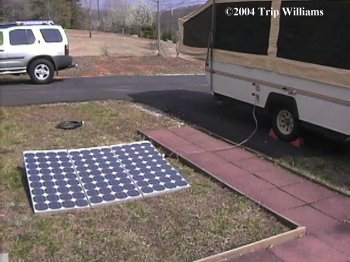
*Wiring Your Camper For Solar*

WARNING: If you are not knowledgeable in basic electrical concepts, DO NOT do this. A mistake could burn down your camper
Many Rubies have Campers, these all have one thing in common, they have a long cord that attaches the camper to a power outlet either at home or at a campground.
Yeah, I know, most campers come with a 12V battery for DC applications (Lights and DC equipment), but we can do MUCH better than that. We run everything in our camper with power from the sun.
First you need to do a survey of your camper... can you add extra 12V batteries without drastically changing the campers tongue weight? To solve this on our camper, we placed two extra 27DC-6, 12Volt Deepcycle batteries (From Wal-Mart) along the axle of our camper under some unused storage cabinets... adding the batteries along the axle means we didn't change the tongue or tail weight of the camper.
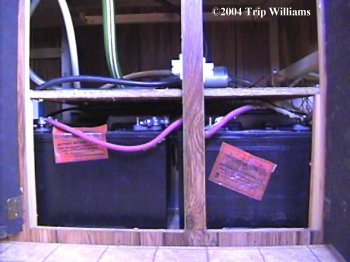
This gives us three batteries total, wired in parallel, for a total of 348 amps (about 4KW). That's pretty respectable for a camper ;)
Next we found the camper's AC junction box. Usually the cable that you plug into a campground outlet runs straight to this box.
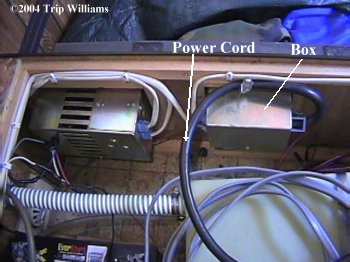
We cut this cord and added a 120V, 3 prong, 30 amp Male twist-lock plug on it. The White wire goes to the Silver terminal on the plug, the black wire goes to the gold terminal on the plug, and the Green wire goes to the green painted terminal on the plug.
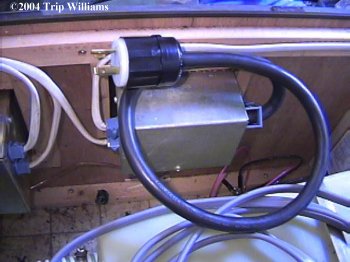
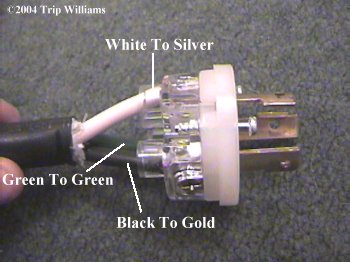
With the rest of the cord we cut off, we added a male 120V, 3 prong, 30 amp twistlock male plug, and a matching female plug on the other end of the cord, using the same color coding from above... in effect we've simply turned the old cord into an extension cord.
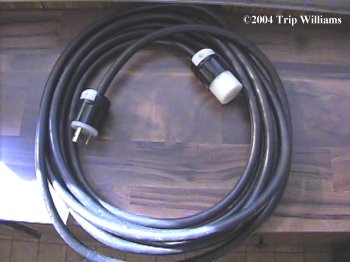
OK, So far we've simply cut the camper's power cord, and added a twistlock plug-in to it.. when we need power from the house or campground, we simply twistlock our new "Extension cord" into the cord from the camper's power box... nothing hard about that.
Here's where we get radical ;)
You'll need some solar panels (We run three 75 Watt Siemens SP-75 panels)
a Good Quality Charge Controller (We use a Trace C40)
and Finally a Good quality Inverter (We use a Trace/Xantrex 2KW inverter)

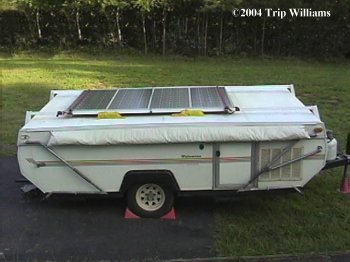
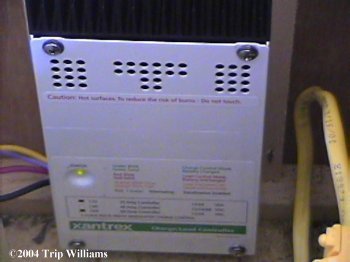
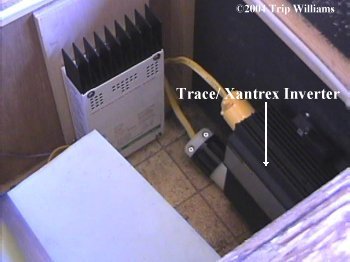
The Solar panels are wired together in Parallel using 45 Amp Anderson Power Pole Connectors. The cord from the solar panels then runs into the camper and plugs into the Trace C40 Charge Controller. The output wires from the Charge Controller run straight to the battery bank in the camper.
I used Anderson Power Pole Connectors to attach the panels to the cord that runs into the camper and attaches to the Trace C40 Charge Controller.
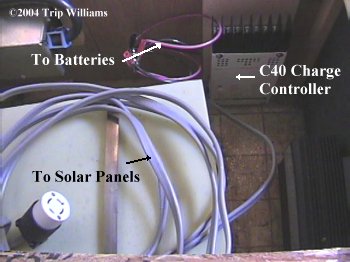
At this point, we simply have solar panels connected to a charge Controller, and the charge controller is connected to the battery bank. When the sun shines, the batteries are charged.. Piece of cake.
Now we mount the Trace inverter. The inverter is wired directly into the battery bank.
We made a short extension cord that has a standard house plug on one end, and a 3 prong, 120v, 30 amp FEMALE twist lock plug on the other end. The house plug goes to the inverter, the female twist lock plug will plug into the camper's male twist lock plug at the camper's power box.
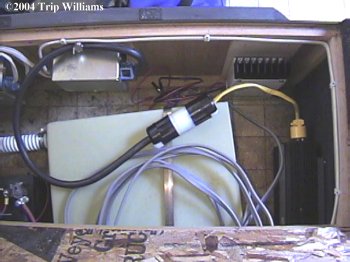
Easy! When you are at a campground and want to use their AC power, you use the long extension cord you made from the camper's old power cord... simply twist-lock in the extension cord to the camper's power box cord, and plug the other end into the campground's electrical outlet.
When camp ground power is not available, lay out the solar panels and twist-lock the inverter cord into the camper's power box cord, and turn on the inverter.
All we're doing really is giving ourselves the option of using AC from the camp ground's supply, OR using AC from our own inverter... nothing hard about it.
If done correctly, this should not affect the DC portion of your camper at all, it'll work like normal.
If your Camper uses the DC power supply to charge your batteries when you are on AC power, then when you are running from inverter you will have some inefficiency due to the 120V AC from the inverter running the DC power rectifier (Which is going back to the battery bank that's powering the inverter in the first place). But this shouldn't hurt anything, it's just a little wasteful... most campers have a switch that allows you to turn off the DC Battery charger when running on AC.
Warlord
www.alpharubicon.com
All materials at this site not otherwise credited are Copyright © 1996 - 2004 Trip Williams. All rights reserved. May be reproduced for personal use only. Use of any material contained herein is subject to stated terms or written permission.